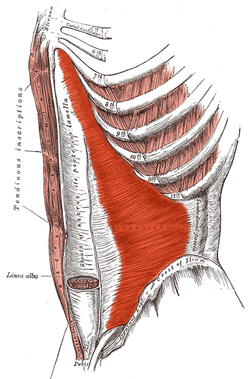
The most important abs are the ones that you can’t see. The six-pack muscle, the rectus abdominus, gets all the attention, but it is really the transverse abdominus that puts in the work. While the transverse abdominus (TVA) is not as flashy, it still has some very valuable asthetic qualities. The TVA is responsible for the tapered V shape as well as what most women think of as a “flat stomach”.
The muscle fibers of the transverse abdominus run horizontally. They are located deep beneath the abdominal musculature of the rectus abdominus, and the internal and external obliques.
Because of its horizontal alignment, the TVA acts as a “natural weight belt” to brace and stabilize the torso. This is done by working in tandem with the diaphram and pelvic floor to create intra-abdominal pressure. This bracing affect is the key to maintaining proper trunk position for efficient and powerful movement of the extremities.
The deadlift is one of the best exercises to train the TVA to brace the torso and efficiently transfer force from the ground up (GRF).
Take a deep “belly breath” and focus on expanding the rib cage out
Lock your air in order to create intra-abdominal pressure
Drive through the heels and “squeeze” the weight off the ground
Take a big breath at the top and sit the hips back and down
Tap the floor gently and pause at the bottom
By slowing the eccentric tempo of the lift and pausing at the bottom, we are able to maximize the bracing effort of the transverse abdominus and get the desired training effect – improved force transfer through the torso.
Next time you deadlift pay close attention to the movement tempo and bracing effect of the TVA. You might even end up with sore abs and a better physique on top of your improved movement efficiency.